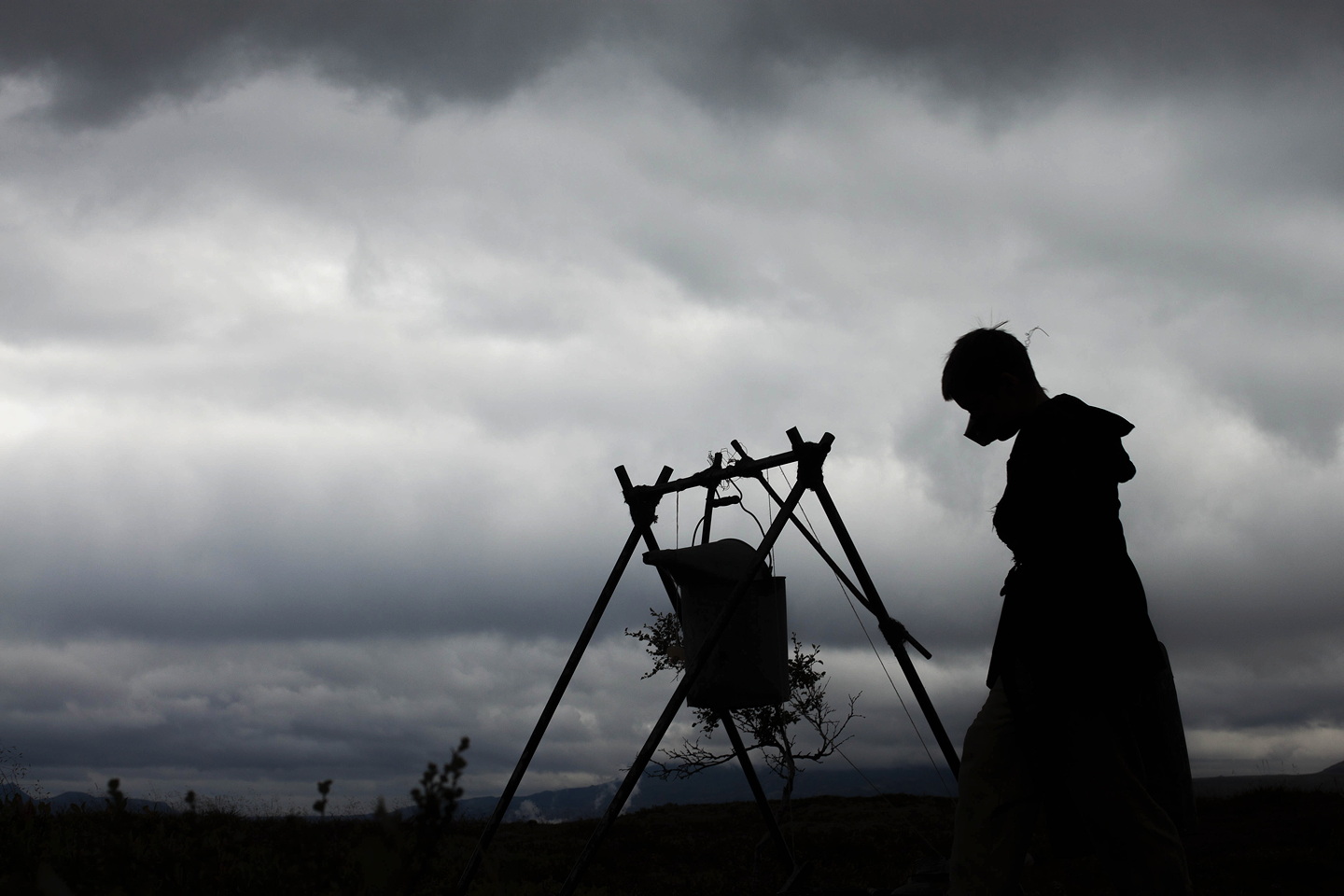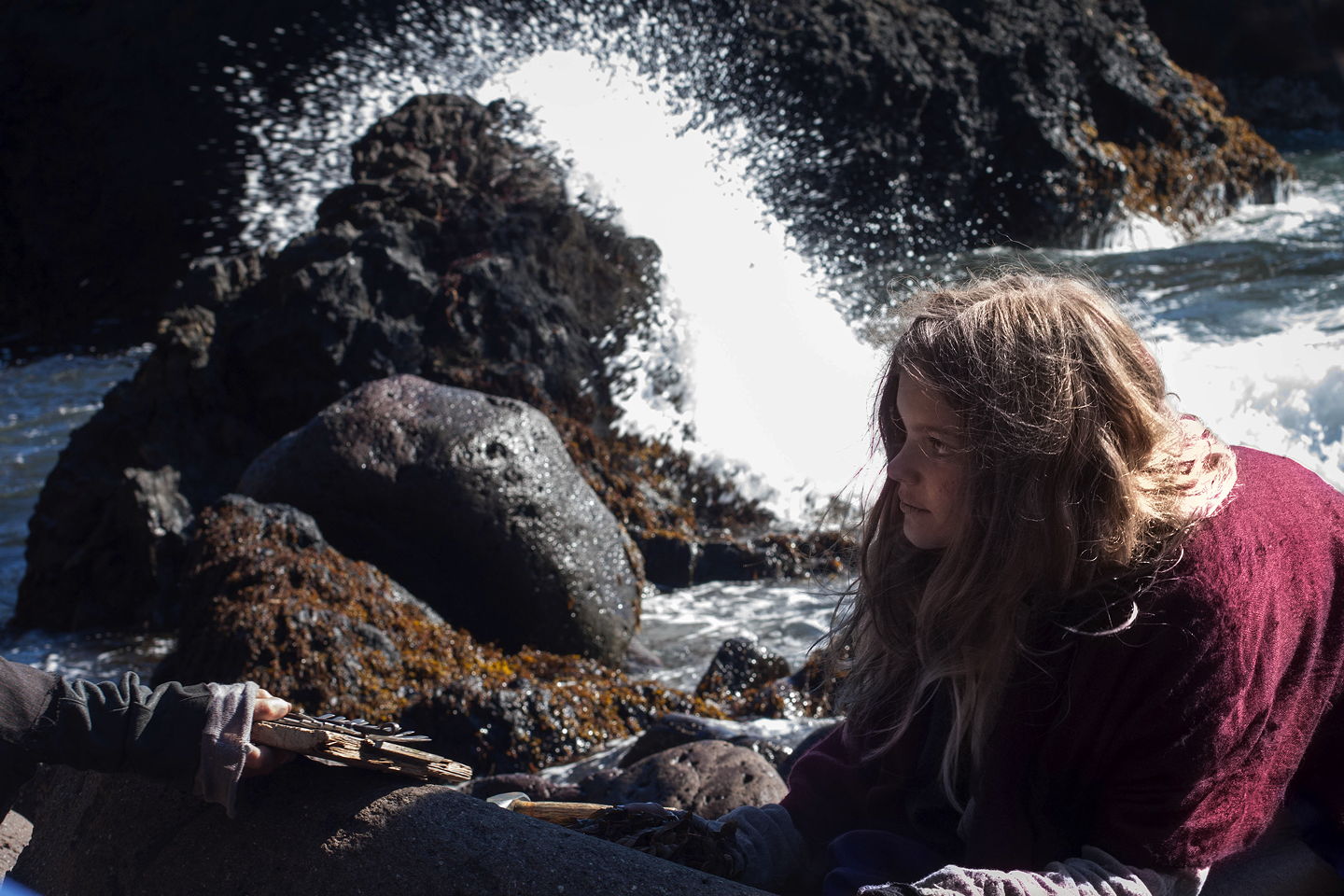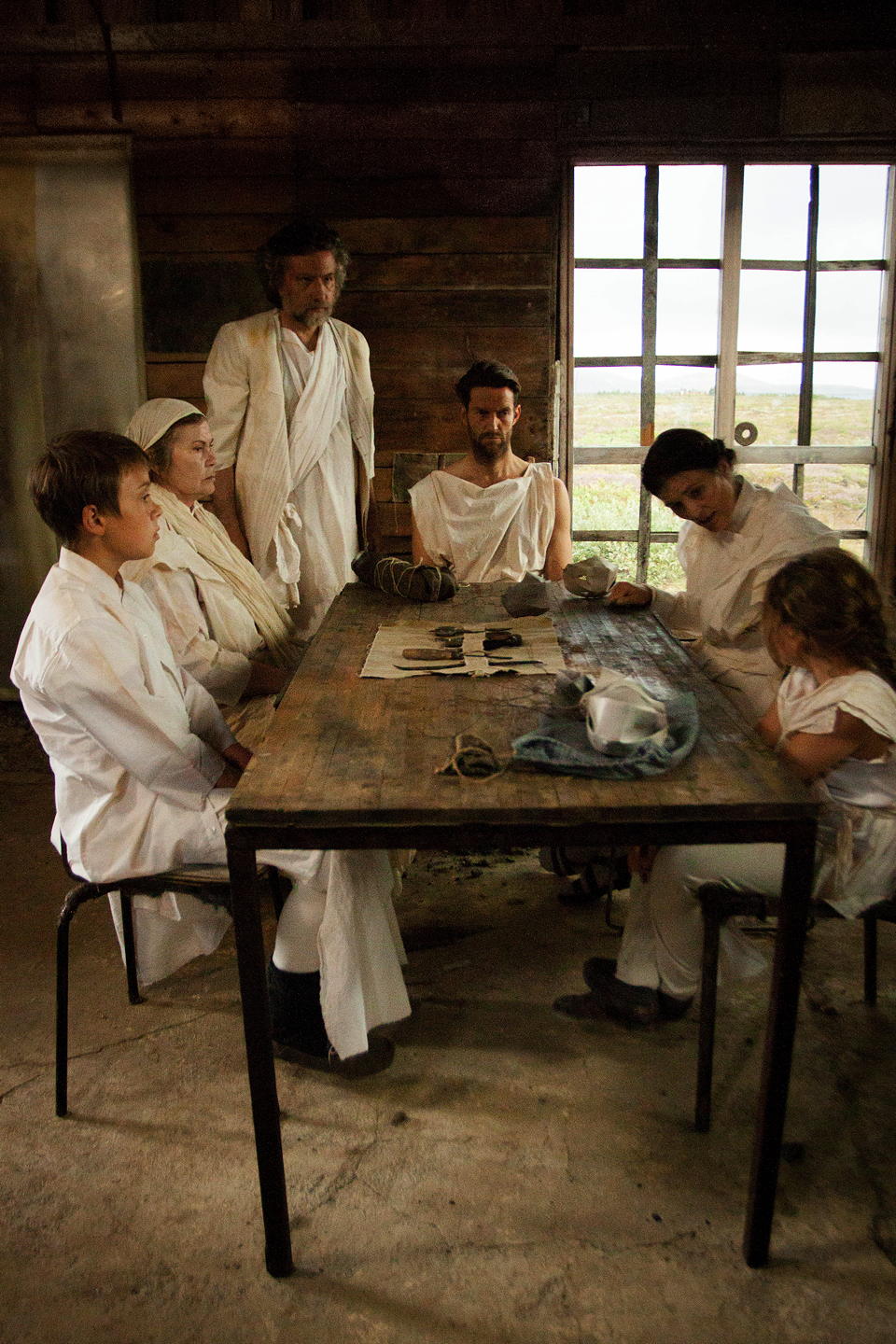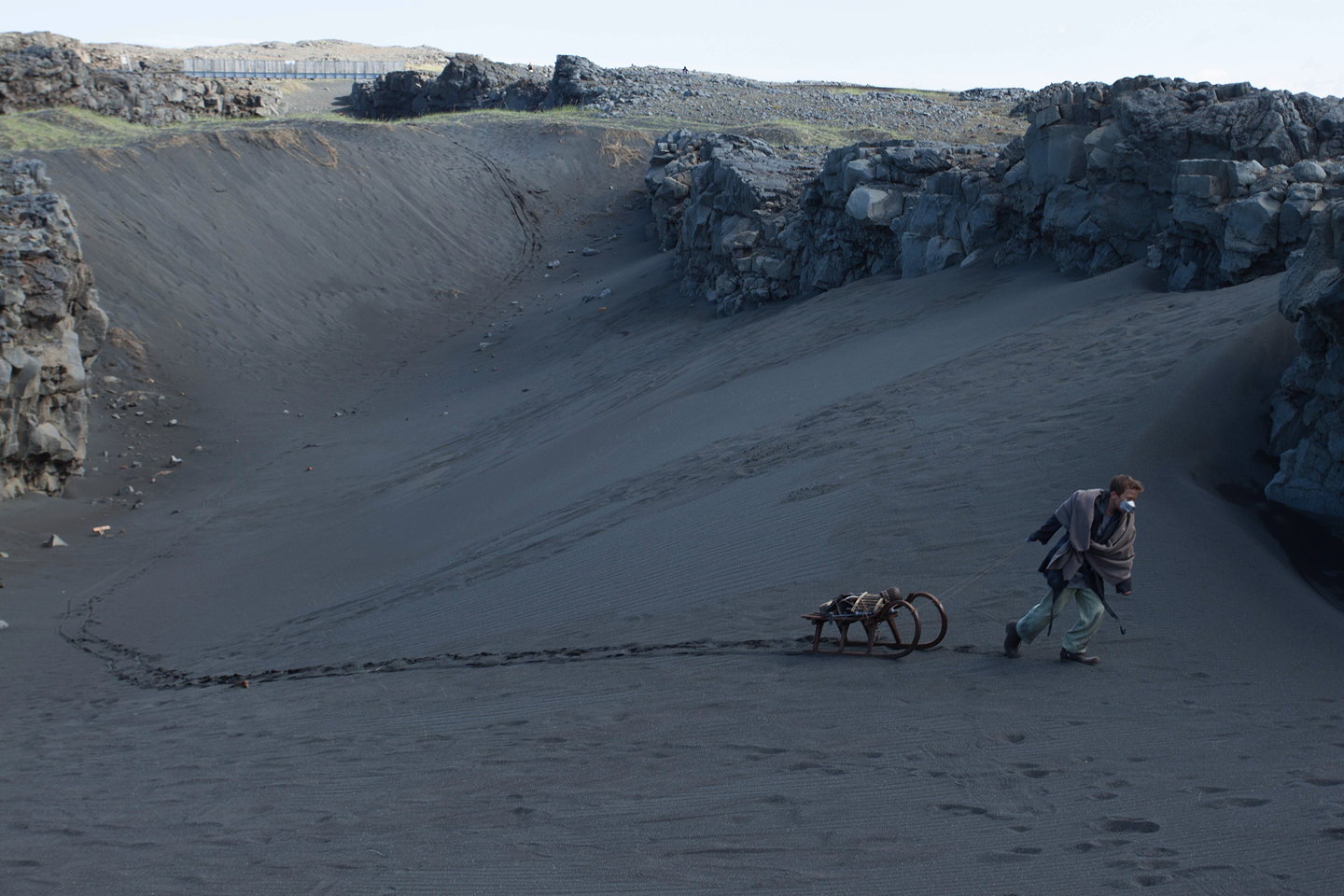
Inspired by the sounds of Icelandic 7 piece Hjaltalin to pen a wordless feature (the narrative within later inspiring Hjaltalin’s final score for the film), Ani Simon-Kennedy’s full-length debut Days of Gray is the tale of a young boy’s awakening into the world of adulthood and uncomfortable break from the freedom of taking life at face value. DN caught up with Simon-Kennedy to discover just how she crafted her post-apocalyptic tale of a world without hope 3.5K miles from the comforts of home.
Days of Gray is the first narrative feature from yourselves at Bicephaly Pictures. What drew you to this project and how did Hjaltalin’s music sow the seeds for the silent form of the film?
I saw Hjaltalin perform in Prague in the spring of 2011 and was blown away by how cinematic their music felt to me. With my creative partner Cailin Yatsko, I started writing a music video treatment that revolved around the moment when the boy encountered the girl for the first time. The narrative then kept growing and growing, and I thought it might be interesting to explore the idea of an album-length music video. I tucked the project away in the idea drawer and then almost a year later at a screening of one of my short films, I was introduced to Alice Bloch, a producer working at IFP. She was looking for first feature projects and asked if I had anything to show. She loved the idea of the film and after talking with Hogni the lead singer of Hjaltalin, we had the band onboard as well. They wanted to record a new album though and so we agreed that we would make the film first and they would create the original score to accompany it. So in a nutshell, the music inspired the film that inspired the music.
In your Kickstarter pitch video you mentioned elements such as, a huge dividing wall and animal mutations for the maskless populace of the world. How did the narrative develop from those earlier ideas to the story we see in the finished film?
The original script really fleshed out the girl’s world a lot more and there was the physical barrier of the wall. It was very ambitious building this dystopian world from scratch, in Iceland nonetheless. As we became more realistic about our timeframe and our budgetary restrictions, I rewrote much of the story and completely took out all the special effects. In a way, these restrictions were a great challenge to hone in on what mattered most about the story and discard anything that was excessive.
Yes, something about a dystopian coming-of-age story with zero dialogue was definitely tricky to pitch!
A dialogue-free feature set on the fringes of a desolate post-apocalyptic world can’t be the easiest project to pitch. What was the experience of finding funders and supports for Days of Gray? What were the frames of reference you directed people to when talking about the project?
Yes, something about a dystopian coming-of-age story with zero dialogue was definitely tricky to pitch! Our fundraising therefore was cobbled from multiple sources and took different forms. We were lucky to be accepted to IFP’s Fiscal Sponsorship program meaning that all donations we received were tax-deductible. With the help of my sister Kira Simon-Kennedy who came onboard as our associate producer, we launched a massive Kickstarter campaign where we raised over $50,000. Our co-producers at Sagafilm, the oldest production company in Iceland, were really an unbelievable help: thanks to them we were able to shoot on an Alexa, and had access to their editing suites. Finally, we were overwhelmed by the generosity of the sponsors we reached out to. In-kind donations of housing, transportation, flights and food really made all the difference and allowed us to focus funds on what would end up onscreen.

The key relationships in the film are that of the young brother, sister, and the girl. How did you find young actors capable of emoting solely through subtle looks and actions? What was your on set process with them?
We were incredibly lucky in the casting process since Rebekka Björnsdóttir, who plays the bassoon for Hjaltalin, happens to also be a casting director. She set up all of the auditions and we saw forty children over the span on a day. When David, Dilja and Viktoria walked in though, I immediately knew they would be perfect for the roles. They were incredible to work with – so focused and prepared. They really inspired everyone to push themselves and they set the tone on set. Directing them was actually less daunting than I expected because I was able to talk them through each take as we weren’t recording sound. They’re still very close to each other to this day and are all acting in Iceland.
It’s a world of grey and dust, peppered with liberating splashes of colour. What was the reference pallet you and Cinematographer Cailin Yatsko worked with to construct the film?
The palette was really dictated by the landscape. Our aim was to keep colors as muted as possible, to accentuate the isolation of the family. The pop of color really comes from the girl who opens up the boy’s world of grays. We privileged natural light as much as possible to keep ourselves flexible and really convey the sense of abandon in this dystopian world. The shooting style was as naturalistic as possible, and luckily shooting in the summer in Iceland we had 20 hours of daylight to keep us going! Since the whole film is from the boy’s perspective, we made the decision to keep the camera locked whenever he was in the house and go handheld when he ventures outside and meets the girl. We looked at a range of films, from Tree of Life to Let The Right One In to Pan’s Labyrinth for their cinematography and approach to narrative from a child’s point of view.
 The art direction, production and costume design all work together to build a compelling world which is different and removed, yet familiar to our own – I particularly liked the simple designs of the masks. How did you and your team go about build the visual aesthetics of the world?
The art direction, production and costume design all work together to build a compelling world which is different and removed, yet familiar to our own – I particularly liked the simple designs of the masks. How did you and your team go about build the visual aesthetics of the world?
How the masks came about is one of my favorite stories about the film. Hjaltalin was concerned about the masks looking too much like gas masks. I intended them to look more like disposable surgical masks and started pulling together reference images, one of which was a mask made out of parchment by designer Sruli Recht. On our first trip to Iceland as we were scouting locations and casting, I was introduced through a friend in NYC to Megan Herbert, an Australian illustrator based in Reykjavik. I was telling her about the project and showing her our reference images – it turned out her husband was Sruli! So we were able to collaborate with him and that’s how our beautiful grey parchment masks came to life. More generally, the goal of this world was to make it feel as familiar as possible. Also everything had to be handmade, or jerry rigged from other existing objects. I wanted to stay away from the common futuristic trope that you see in movies where everything is metallic and shiny. The driving strength of the world we created was that it was so far in the future that it was as if civilization was starting all over again.
Your editor Perry Blackshear joined you on the 14 day shoot in Iceland to cut the dailies for nightly review. Did that have an effect on what and how you shot the following day?
It was a huge help getting to see the film take shape as we were shooting. Especially with a film with no dialog, it was key for us to make sure that the story was coming through thanks to visuals alone. It was a lifesaver to be able to shoot a couple additional inserts on the last day to make sure the narrative was as clear as possible.
Days of Gray maybe a dialogue-free film but it’s far from silent. What approach did you take with the film’s sound design to better inform the character’s actions and wider narrative?
The sound design actually came after we thought we had finished the movie. We held private screenings for our Kickstarter backers, which doubled as test screenings. At this point we were toying with the idea of adding a sound mix. After the feedback confirmed our thoughts, we set about finding a sound designer who would be able to recreate the sounds of the film since we hadn’t recorded anything on set. Luciano Vignola and Sara Stern saved the day, and spent close to six months painstakingly creating the sound mix and the foley using the props from the film. It was such an exciting part of the process and the film is definitely much stronger with the sound mix.
It was key for us to make sure that the story was coming through thanks to visuals alone.
In a film of this nature the score carries extra weight and Hjaltalin’s beautiful compositions not only underscore the onscreen action but usher in different movements in the narrative like an orchestral symphony. How did you approach the collaboration for the musical elements of the film?
The scoring was a really interesting process since neither of us had ever worked on a project like this before. Hjaltalin is a seven piece orchestral pop band and their music was the inspiration for the film yet when we presented the final cut to them, we quickly all realized that the score was going to have to be much more instrumental and sparse than their usual tunes. I sat with them and really talked through the film scene by scene, explaining the emotional tones and character arcs as the narrative unfolded. Then they set about crafting the score and I would drop into the studio every couple of days to check on the progress and give them feedback. But largely I let them do their job and respected their process.
In the final scene I was on tenterhooks as to how things would end for the kids. Were you always heading towards that ending or were things perhaps darker in earlier drafts?
There were lots of different endings as I was writing Days of Gray. There was always the idea of having the end be an escape, that could be interpreted as hopeful but also open-ended. The theme of the film deals with the moment when you cross the threshold from child to adult and begin to make choices for yourself. Whether they are right or wrong matters less than the fact that they are entirely your own and not dictated by your upbringing. Eventually as we neared the final draft it became apparent that we had the only ending possible. Not to spoil anything, but in the end The Boy becomes the master of his own destiny while not forgoing where he came from.

This is a film which envelopes the viewer as you give yourself over to it. What have audience reactions been like to the film? Have you been able to host many live score screenings of the film?
Some of the best comments I’ve received from the viewers is that the film has a dream-like quality. Because we chose to show the story completely from the Boy’s perspective, not everything is immediately apparent. As he discovers the world outside of his home for the first time and experiences a kinship with the Girl who is an outsider, his worldview expands and so does the viewer’s. The hope with having a modern-day silent film was to recreate the magical feeling that theater-goers had back in the day when a film was a live, communal experience. It was amazing to be able to showcase the film with Hjaltalin performing the live score in Iceland, Sweden and Luxembourg so far. The venues have also been breathtaking since movie theaters can’t usually accommodate the seven-piece band: so far we’ve been to opera houses and monasteries, theaters and concert halls.
The hope with having a modern-day silent film was to recreate the magical feeling that theater-goers had back in the day when a film was a live, communal experience.
Days of Gray is now available on VoD across several platforms. How did you approach the film’s distribution and choice of online release partners?
We knew early on that a theatrical distribution wasn’t likely for such an unusual film. After screening in festivals around the world for a year, we were ready to make the film more easily accessible. After being approached by Vyer Films, Fandor and Vimeo on Demand, it made sense to make the film available on all of the platforms at once. We coincided the release with our New York premiere at Anthology Film Archives. DVDs are still available through our website, and it’s been really rewarding receiving orders from countries as far away as Japan and Brazil. We’ll keep releasing the film on as many online platforms as possible as the film continues to screen in festivals.
What will we see from Bicephaly Pictures in the future?
Days of Gray is going to be screened at Wilton’s on February 20th! Tickets are available here. Seeing the film at the world’s oldest music hall is something I wish I could experience in person. In the meantime, I’m back in New York where Cinematographer Cailin Yatsko and I run our production company Bicephaly Pictures. We’ve been focusing on branded content and commercial projects while I write the script for our next feature. Without jinxing anything, I’ll say it’s a road trip movie with dialog, so it’s quite a departure from Days of Gray!
Days of Gray is available to stream or download now via: Vimeo on Demand, Vyer Films, Fandor and Universcine.


